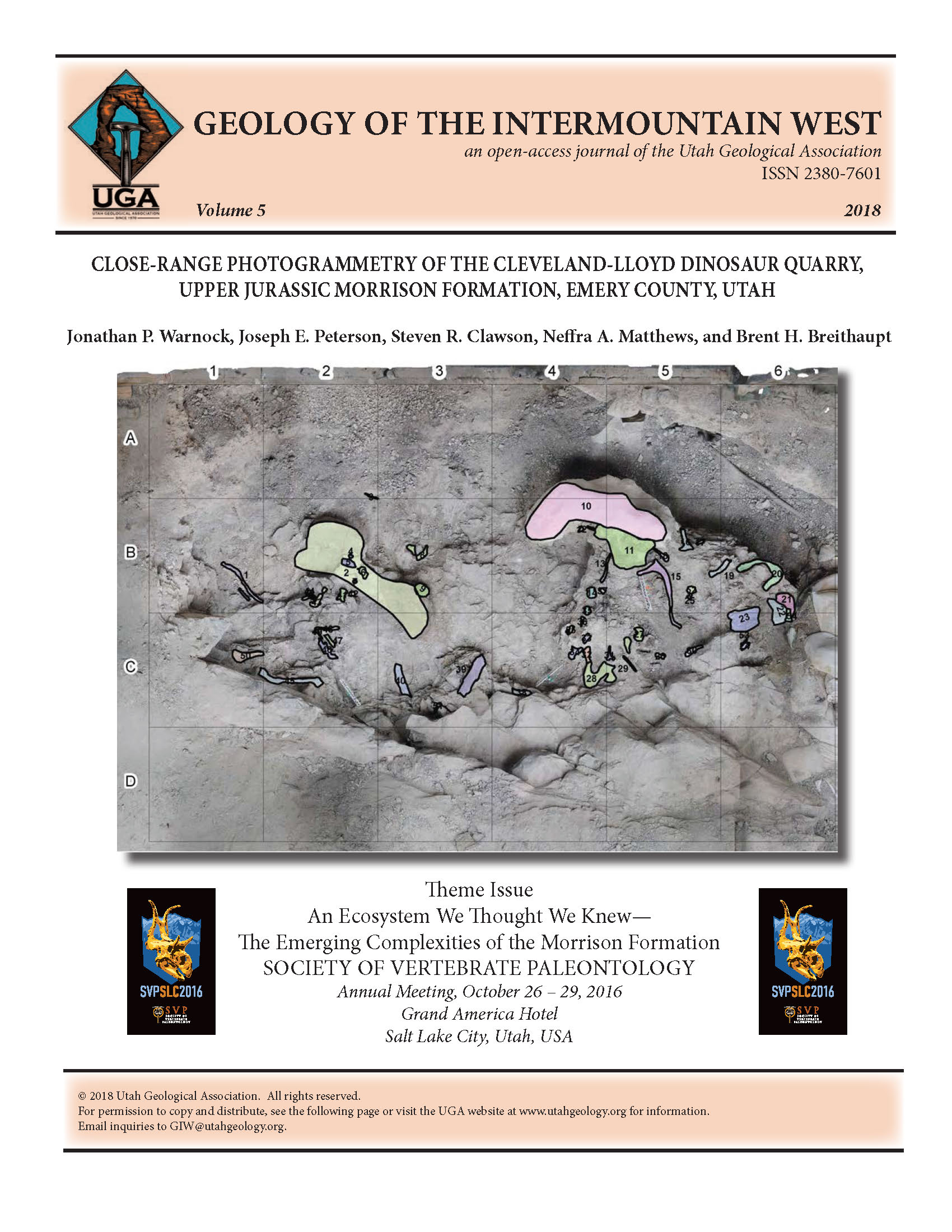Close-range photogrammetry of the Cleveland-Lloyd Dinosaur Quarry, Upper Jurassic Morrison Formation, Emery County, Utah
Abstract
Bone distribution data are essential for taphonomic assessments of bonebeds. The Cleveland-Lloyd Dinosaur Quarry (CLDQ), an Allosaurus-dominated bonebed within the Upper Jurassic Morrison Formation, has been researched for nearly 100 years, but published maps are scarce considering the impor¬tance and density of the assemblage. Additionally, few detailed maps of bones from the CLDQ have been published in two dimensions, whereas the third, the stratigraphic/vertical, dimension has never been recorded. Utilizing standard field mapping techniques as well as photogrammetry, the three-dimensional orientations of bones currently exposed in the quarry have been analyzed for potential dispersal patterns. Additionally, a “living” or continuously updatable, photogrammetric map which allows for researchers to view the bones in three dimensions throughout the course of excavation has been created. Continued photogrammetry in future field seasons will allow visualization of bones in three dimensions even after the currently exposed bones have been removed. Utilizing these newly available data, two distinct clusters of bone within the South Butler Building at the quarry are identified. Based on statistically significant average orientations and depths of these bones, early-stage post-mortem transport of carcasses prior to disarticulation (i.e., bloat and float) is supported as an important transport and depositional process within the quarry assemblage. Furthermore, possible evidence of multiple depositional events is discussed.

Copyright (c) 2018 Utah Geological Association

This work is licensed under a Creative Commons Attribution 4.0 International License.




